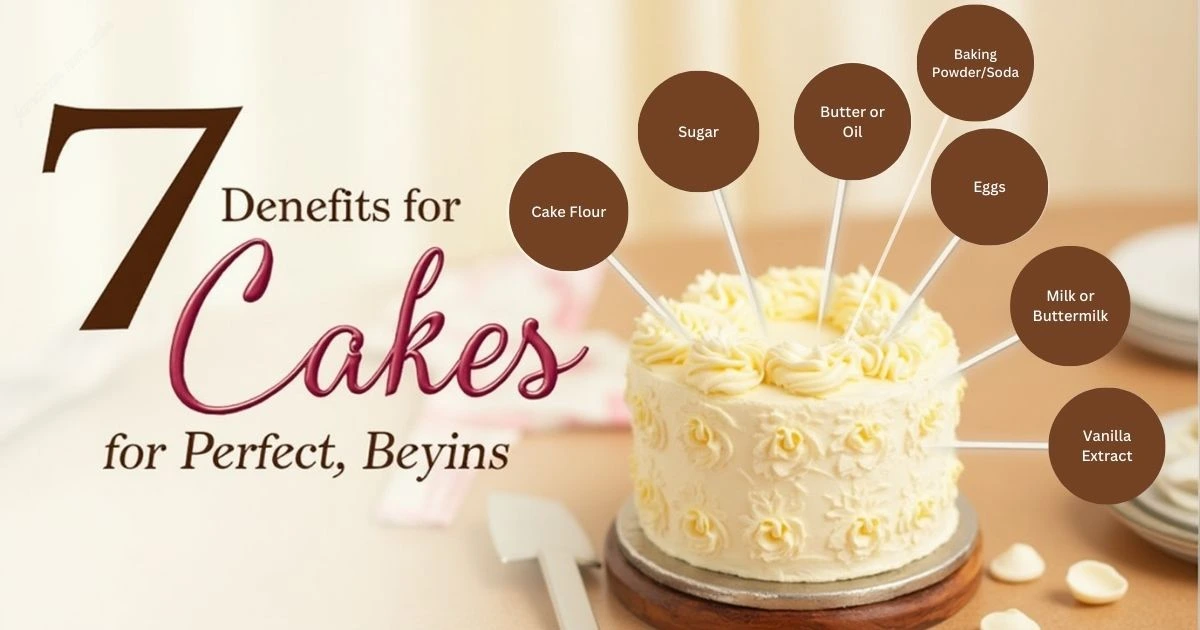How Cake Flour Transforms Baking: Top 7 Benefits for Perfect Cakes
Have you ever wondered why some cakes are light and fluffy while others turn out dense and heavy? Could it be the chef’s secret ingredient that makes all the difference? The answer might surprise you it’s not magic, but rather the right choice of flour. Today, we’re diving into how cake flour can transform your baking experience and deliver perfect cakes every time.
Table of Contents
Overview
Cake flour is a baker’s best friend when it comes to creating tender, airy baked goods. This recipe focuses on utilizing cake flour to achieve bakery-quality results at home. With minimal effort and simple steps, even beginners can master this technique. The preparation requires about 30 minutes, including mixing and baking, making it an ideal project for any skill level.
Essential Ingredients
To bake with cake flour successfully, gather these key components:
- Cake Flour : Essential for its fine texture and low protein content, which minimizes gluten formation and ensures a soft crumb.
- Sugar : Adds sweetness and contributes to browning during baking.
- Eggs : Act as binders and provide structure without weighing down the batter.
- Butter or Oil : Enhances flavor and moisture content.
- Milk or Buttermilk : Moisturizes the cake and activates leavening agents like baking powder.
- Baking Powder/Soda : Helps the cake rise by producing carbon dioxide gas bubbles.
- Vanilla Extract : Boosts overall flavor profile.
Substitutions and Variations
If cake flour isn’t readily available, you can substitute it using a mixture of all-purpose flour and cornstarch. For every cup of cake flour required, use one cup minus two tablespoons of all-purpose flour mixed with two tablespoons of cornstarch. However, keep in mind that this substitution may slightly alter the final product’s texture compared to using actual cake flour.
Step-by-Step Instructions
- Preheat Oven : Set your oven to 350°F (175°C) to ensure even cooking once the cake goes in.
- Mix Dry Ingredients : In a large bowl, sift together the cake flour, sugar, baking powder, and a pinch of salt. Sifting helps aerate the flour and prevents lumps.
- Combine Wet Ingredients : In another bowl, whisk eggs, milk, vanilla extract, and melted butter until well combined.
- Blend Batter : Gradually add wet ingredients to dry ones, stirring gently just until incorporated. Overmixing can lead to tough cakes due to excessive gluten development.
- Pour Into Pan : Grease and flour your cake pan before pouring in the batter. Tap the filled pan lightly against the counter to release trapped air bubbles.
Assembly
Once your batter is ready, carefully pour it into the prepared pan. Smooth the top with a spatula for an even surface. Bake according to your recipe’s instructions, usually around 25-30 minutes for standard layers. After removing from the oven, let the cake cool completely before decorating. Presentation tips include dusting powdered sugar over the top or adding fresh fruit slices for color and freshness.
Storage and Make-Ahead Tips
Store leftover cake tightly wrapped at room temperature for up to three days or freeze portions for longer preservation. To reheat individual slices, microwave briefly or warm them in a preheated oven for a few minutes. Preparing the batter ahead of time and freezing it works well too; simply thaw overnight in the refrigerator before baking.
Recipe Variations
Feel free to experiment with flavors such as chocolate, lemon zest, or almond extract added to the batter. Adding cocoa powder transforms the basic white cake into a rich chocolate delight. You could also incorporate chopped nuts or dried fruits for extra texture and taste.
Conclusion
Now that you know how cake flour transforms baking, it’s time to roll up your sleeves and try it yourself! Whether you’re a seasoned pro or new to baking, incorporating cake flour into your recipes will elevate your creations to professional standards. Enjoy experimenting with different flavors and techniques, and remember—the more you practice, the better your cakes will become!
FAQs
Q: Can I replace all-purpose flour with cake flour in every recipe? A: While possible, doing so might affect the outcome depending on what kind of texture you desire. High-protein flours like bread flour create firmer textures unsuitable for delicate cakes.
Q: What health benefits does cake flour offer? A: Though primarily used for texture improvement, choosing unbleached versions reduces exposure to chemical treatments. Always opt for whole grain alternatives if seeking additional nutritional value.
Q: How long can I store homemade cake flour substitutes? A: Prepared substitutes should be kept in an airtight container in a cool, dry place for up to several months. Label clearly to avoid confusion with other pantry items.
By following these guidelines, you’ll soon discover the transformative power of cake flour in your baking adventures! Happy baking!

